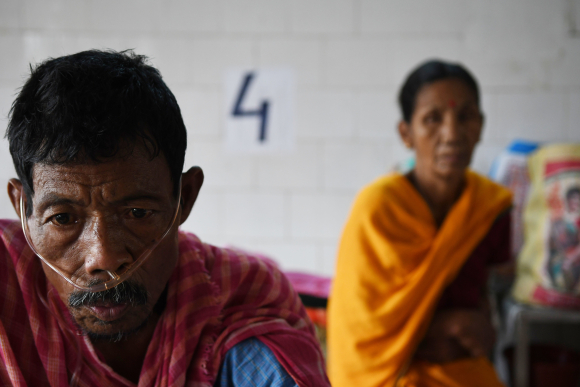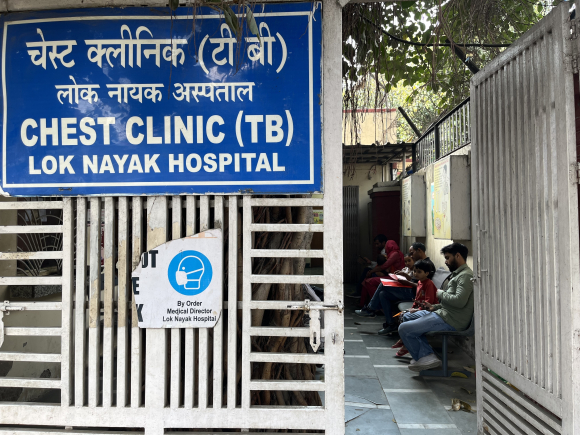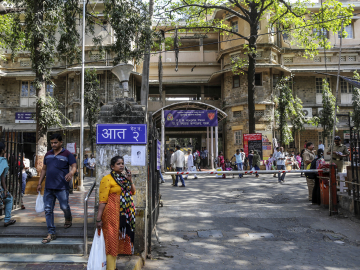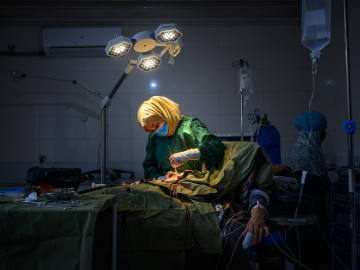Tuberculosis Prevention Cuts in India
DELHI, India—Mohammad Arif, a 45-year-old rickshaw puller, dropped out of tuberculosis treatment for several months because he couldn’t afford to miss work to visit the clinic.
Then his cough worsened, so he returned to Lok Nayak TB and Chest Clinic, the capital’s primary government-run TB clinic. But Arif, who cannot read or write, couldn’t fill out a form required to enter the clinic.
Feeling lost after waiting for a few hours, he left for home.
Arif isn’t the only patient challenged by the arduous standard treatment for TB, which requires daily medications and monthly clinic visits.
“The doctors in these hospitals cater to hundreds of patients a day and have minimal time for explanations or comprehensive care, focusing primarily on eliminating the bacteria rather than supporting patients holistically, which leads to many patients dropping out of the program,” says Akshata Acharya, a recent MDR-TB survivor and author of Eclipsed, a book about her journey overcoming tuberculosis. “This is where NGOs have played a significant role in ensuring the patients continue their treatment.”

A TB patient uses a nasal cannula during treatment in Tripura, India, on July 7, 2018. Abhisek Saha/SOPA Images/LightRocket via Getty
One of those NGOs—the Karnataka Health Promotion Trust—supported a “TB buddy” system of guides who help TB patients with documentation, offer emotional support, and ensure treatment completion even after patients began to feel better. The project focused on vulnerable populations, including those with latent tuberculosis infection (LTBI)—individuals infected with TB bacteria but who do not have the disease. While precise data are unavailable, the WHO has estimated that approximately 360,000 children under 5 in India were eligible for LTBI treatment, with 5%–10% at risk of developing active TB (when people feel ill and can spread TB germs to others), per WHO’s 2023 global TB report. Continuing support for the TB buddy project, part of a larger program that served 5.1 million TB patients in four Indian states with high TB rates, ended with USAID funding cuts in the country.
The cuts are a blow to the country’s aspirations to eliminate TB. Although the country has the highest TB burden in the world and accounts for 26% of all TB cases, India’s Health Minister Jagat Prakash Nadda recently said he expects India will eliminate TB by the end of this year. Few experts believe India will reach that goal this year—or anytime soon—given that the disease causes at least 2.8 million new cases and 325,000 deaths each year.
“Elimination ... has become a political promise, but the real numbers are far from the elimination target,” says Chapal Mehra, editor of the book Tuberculosis: India’s Ticking Time Bomb, adding that it would be an achievement for the country to meet even the 2030 goal for ending TB as a public health challenge.
Such targets will be more difficult to achieve because of cuts to the U.S.’s $400 million annual contributions to global TB initiatives. For example, the Tuberculosis Implementation Framework Agreement project provided grants to NGOs and was working in 24 high-burden countries, including India, toward TB control and elimination. It was forced to abruptly end 42 grants and contracts once word came of USAID’s cutbacks.

People wait outside the tuberculosis clinic at Lok Nayak hospital. Cheena Kapoor
While USAID primarily funded prevention programs, TB treatment services in India may not be severely affected, Mehra notes. USAID provided treatment in a few states, but these amounts were relatively small compared to India’s national TB budget, Mehra says.
The USAID funding cuts to prevention programs will still impact India’s elimination goals. For example, USAID has contributed more than $140 million to the government-run TB Mukt Bharat (TB Free India) program, which sought to prevent TB transmission. Also canceled is USAID’s support for the Tuberculosis Health Action Learning Initiative, which worked to change behaviors through TB awareness activities and community health workers’ support for vulnerable populations, such as the urban poor, tribal communities, migrants, and industrial workers.
Despite the USAID cuts, the country is still ramping up its efforts against TB, says Sanjay Rajpal, MD, medical director of the government-run New Delhi Tuberculosis Centre. “The government has been doing its best work in TB elimination over the past few years, and we’ve felt the pressure from higher-ups to do our best in reducing the numbers,” said Rajpal. “COVID has set us back, so we need an additional two to three years, but we’re confident we’ll reach our goal before the WHO’s [2030] global target.”
Ed. Note: This article was produced in collaboration with Hopkins Bloomberg Public Health magazine and is part of a series that examines front-line impacts of cuts in U.S. funding.
Join the 50,000+ subscribers in 170+ countries who rely on Global Health NOW summaries and exclusive articles for the latest public health news. Sign up for our free weekday newsletter, and please share the link with friends and colleagues.
Dr. Renu Singh checks a patient for possible signs of tuberculosis in the district TB center in Patna, Bihar, India, on August 10, 2010. Lynsey Addario via Getty




